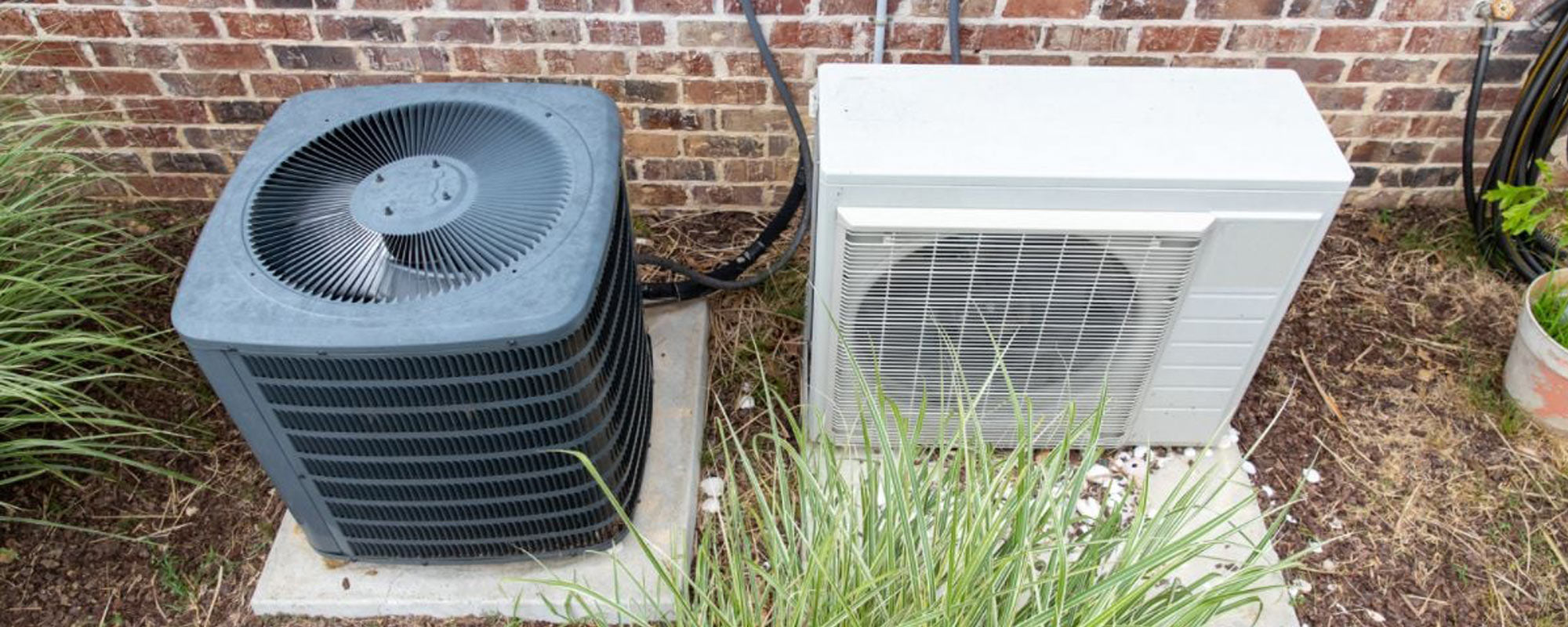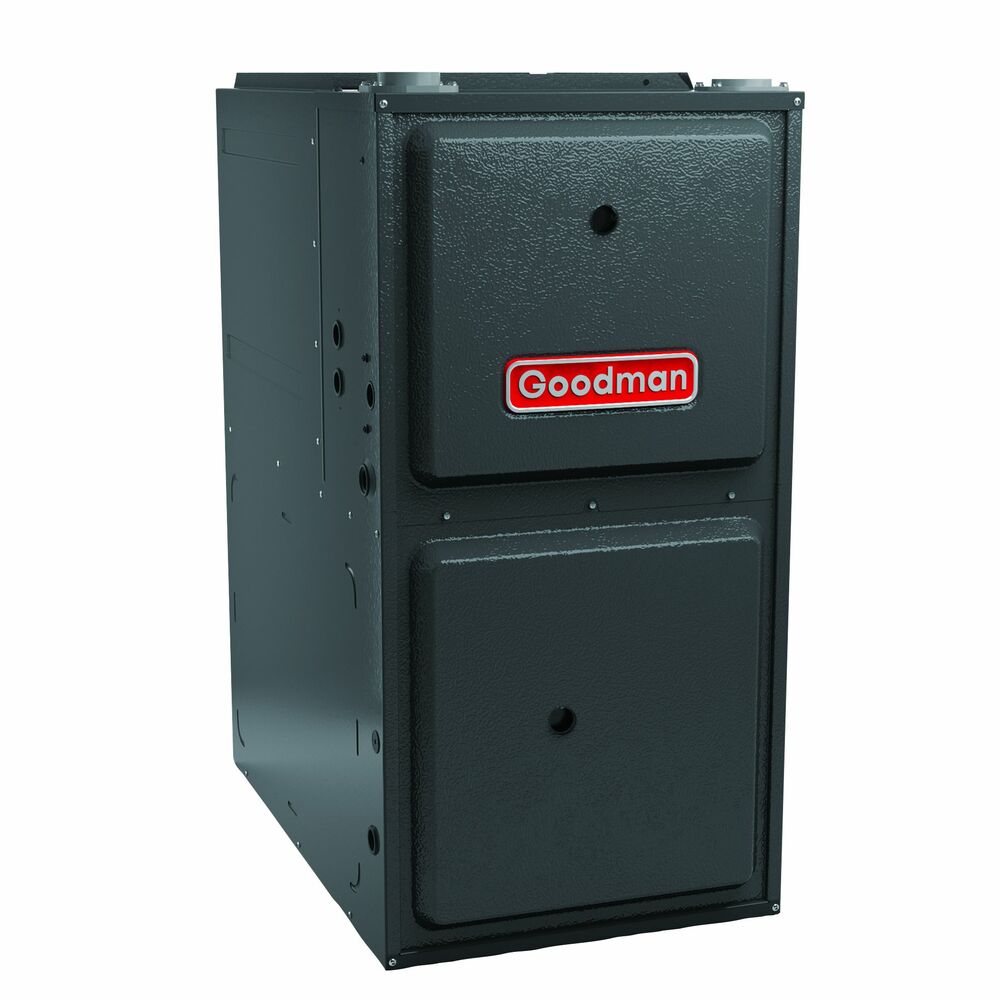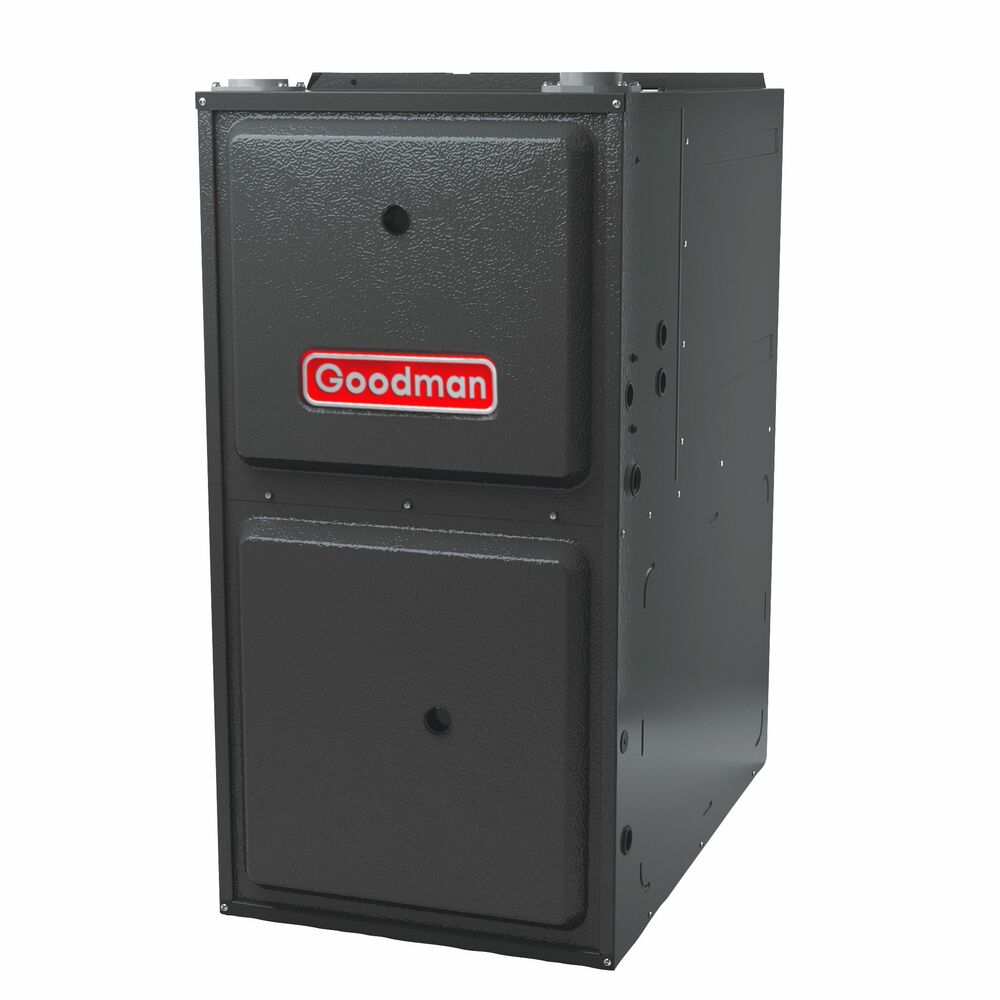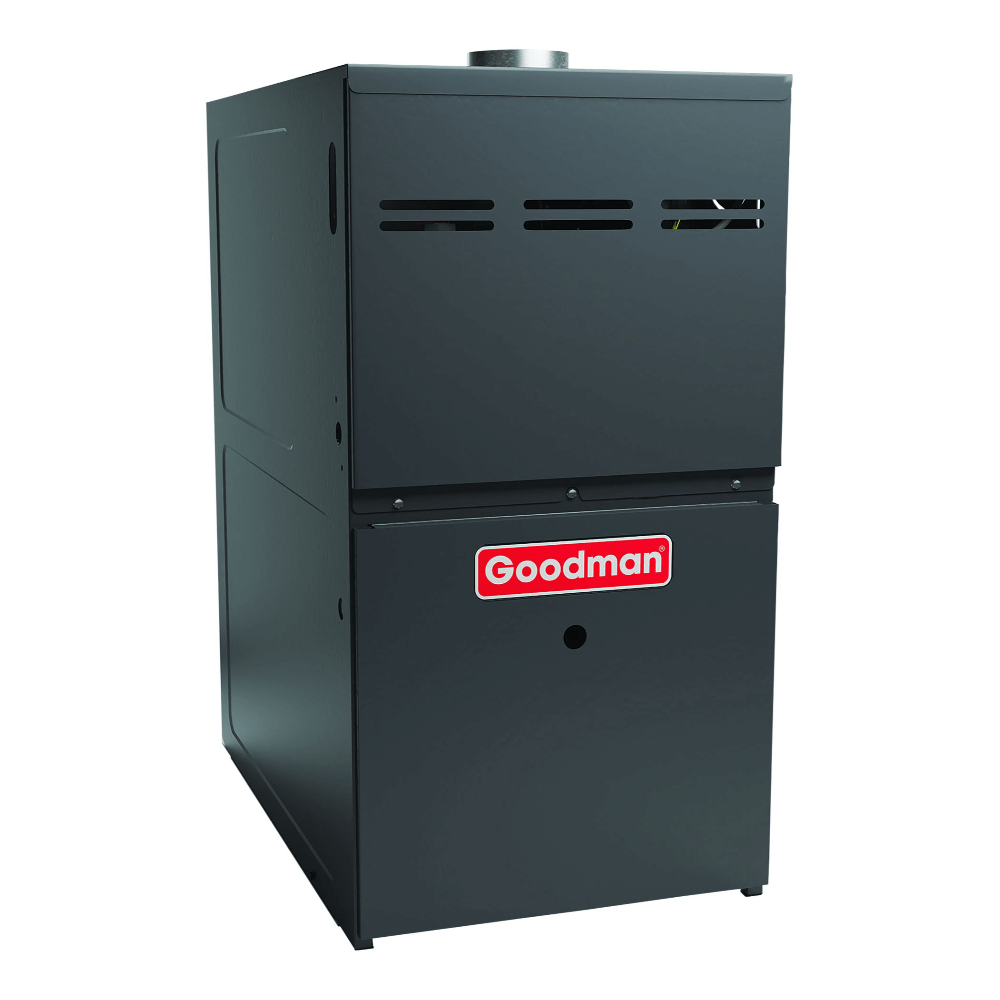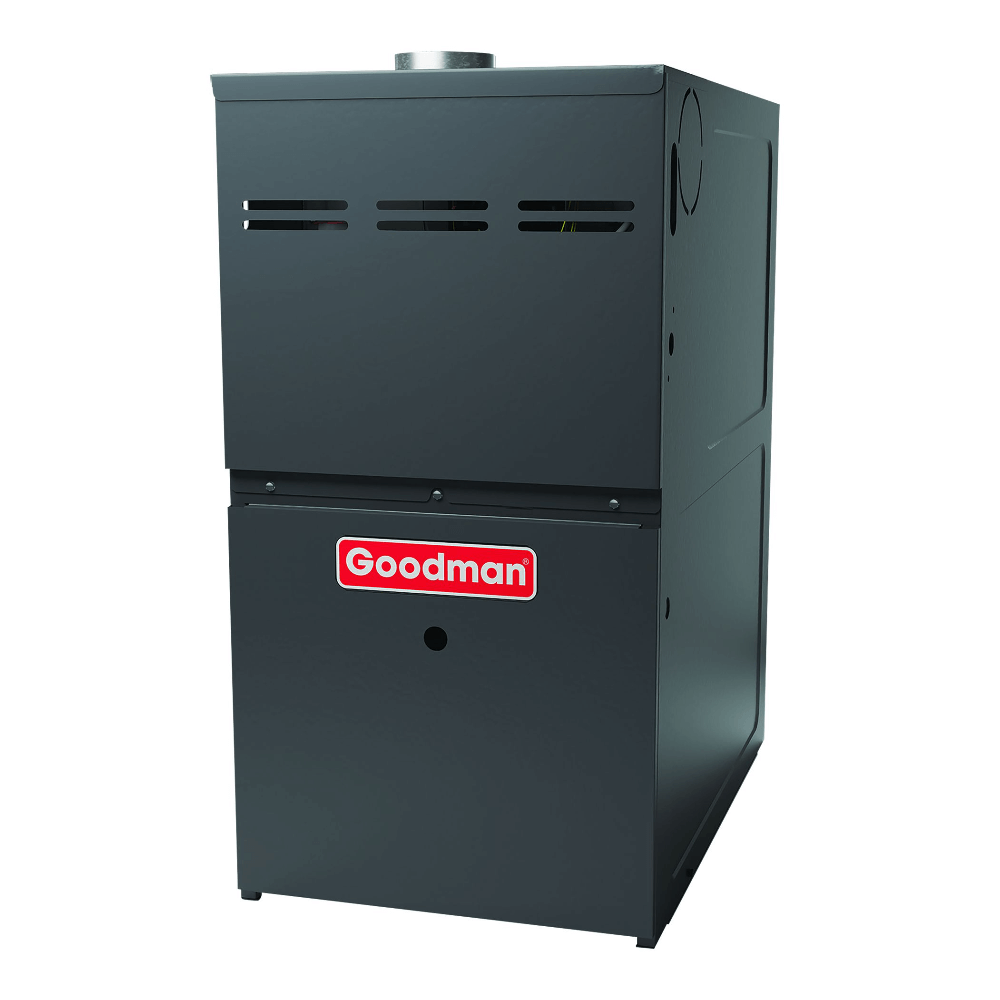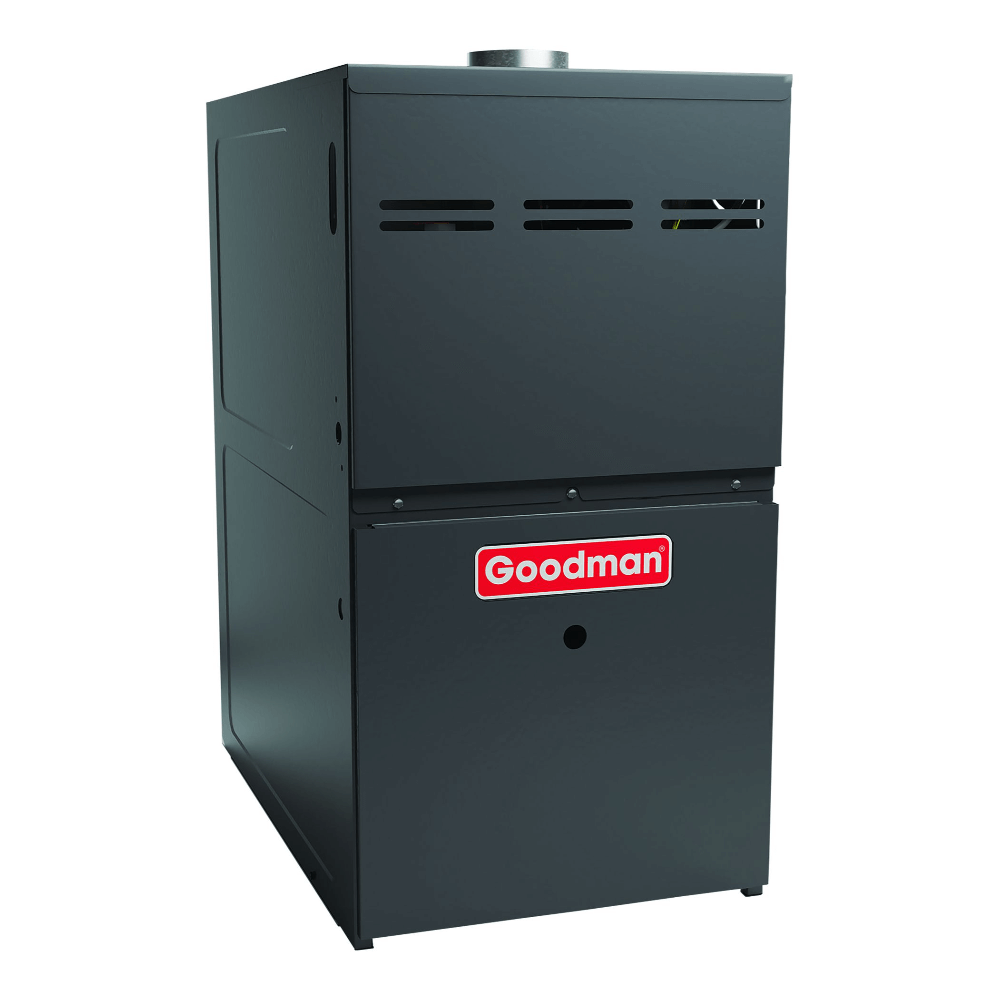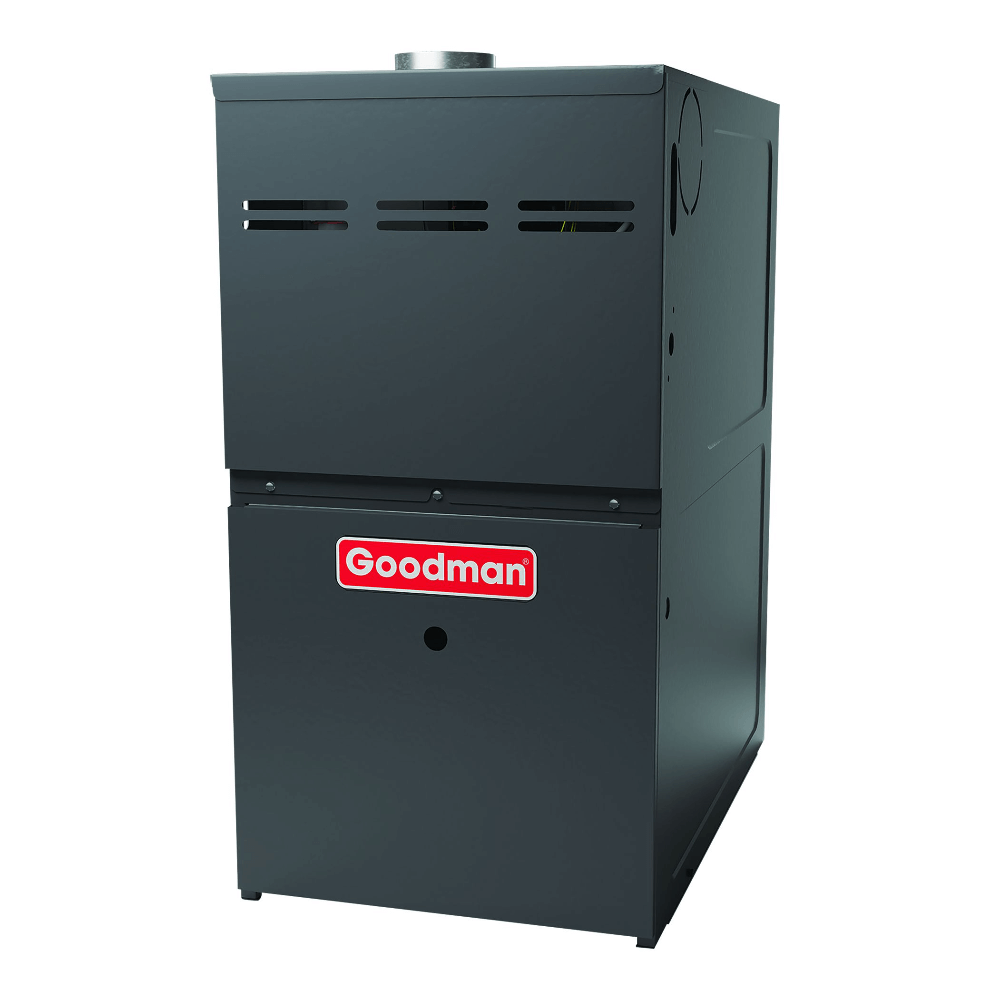After deciding on a heat pump system for your home, your next decision involves choosing between a ducted heat pump or a mini-split. Heat pumps are energy-efficient cooling and heating systems that utilize refrigerants and heat exchangers to transfer heat between buildings and other sources, such as the air and the ground. Heat pumps are essentially two-way air conditioners capable of removing and supplying heat.
Heat pumps come in many styles and configurations, making them adaptable to any home. Heat pumps can be categorized by how they distribute conditioned air. While ducted heat pump systems are best for some homes, others are more compatible with mini-split systems.

Upgrade Your Heating with Our Heat Pumps: Click to Explore!
Ducted Heat Pumps
Ducted heat pump systems use the homes’ ductwork to deliver the conditioned air. A ducted system incorporates one outdoor unit and one indoor unit. Ductwork can be installed if none exists, but installation is expensive and requires significant renovation to the home.
How does a heat pump work? In cooling mode, the refrigerant in the indoor evaporator coil absorbs heat from the home’s air. The air handler’s fan blows the cooled air through the home’s ducts and vents. The heated refrigerant moves outside through the refrigerant lines to the condenser coil, releases the heat, returns to the indoor coil, and the cycle repeats. The operation reverses in heating mode, with the outside coil absorbing heat from the outdoor air and the indoor coil releasing the heat. Some ducted systems include an auxiliary heat system that provides backup heating when necessary.
Types of a Ducted Heat Pumps
Ducted heat pumps are categorized by the source with which the heat pump exchanges heat. Three types of heat pumps that use ducts are air-source, ground-source, and hybrid heat pumps.
Air-Source
An air-source heat pump transfers heat between air inside and outside the home. Air-source heat pump systems include refrigerant lines connecting indoor and outdoor coils. The refrigerant absorbs heat from the home’s air and transfers it to the outside air in cooling mode. In heating mode, the refrigerant absorbs heat from the outside air and transfers it to the indoor air.
Ground-Source
A ground-source heat pump transfers heat between the air inside a home and the ground. Also known as a geothermal heating and cooling system, a ground-source heat pump includes an underground network of refrigerant pipes with lines running to the indoor unit. The refrigerant displaces household heat to the ground in cooling mode and transfers ground heat to the house when heating.
Hybrid
A hybrid heat pump system incorporates an electric heat pump and a gas or oil furnace. Also known as dual-fuel heat pumps, hybrid systems are beneficial in cold climates. The heat pump provides cooling and most of the home’s heating. The furnace takes over heating when the outdoor temperature drops lower than the heat pump can efficiently manage.
Pros and Cons of Ducted Heat Pumps
Ducted heat pumps conveniently integrate with existing central air systems and replace furnace and air conditioner combinations. Heat pumps are significantly more energy efficient than conventional systems and better at dehumidifying. Replacing an electric furnace with a heat pump can reduce energy costs by 50%. Ducted indoor units are tucked away in basements and other out-of-the-way areas, and the ducts are concealed behind walls, floors, and ceilings. Individual room temperatures are controlled by opening and closing vents. Air-source, ground-source, and hybrid styles of ducted heat pumps are available.
While ducted heat pumps are a good fit for homes with ductwork, they are incompatible with homes lacking ducts. Duct installation is expensive and requires substantial renovations to install ducts behind walls and vents in floors and ceilings. Ducts are inefficient delivery systems, losing 20 to 30% of the airflow through leaks and bad connections. Air flowing through the ducts can pick up dust and allergens that have settled in them and carry the contaminants into your home. Furthermore, ducts sometimes host rodents and insects.
Pros
-
Efficient heating and cooling
-
Effectively removes humidity
-
Indoor unit and ducts are concealed
-
Vents can be closed in individual rooms
-
Many styles are available
Cons
-
Duct installation is expensive and destructive
-
Ducts lose air through leaks and bad connections
-
Ducts accumulate particles that can contaminate or block airflow
-
Pests can inhabit ductwork
Ductless Mini-Split Heat Pumps
Ductless mini-splits are air-source heat pumps that don’t connect to ductwork. Instead, cool or warm air blows directly from wall-mounted units. A mini-split system incorporates an outdoor unit and one or more indoor wall-mounted units. Mini-splits are suitable for homes without ductwork, windowless rooms, and spaces that aren’t connected to a home’s ducts, like additions, garages, and sunrooms.
Mini-splits operate like other air-source heat pumps. In cooling mode, the refrigerant in the indoor wall-mounted unit’s coil absorbs heat from the home’s air. The unit’s internal fan blows the cooled air into the room. The heated refrigerant moves through the refrigerant lines to the outside unit’s coil, releases the heat, returns to the indoor unit, and repeats the cycle. The operation reverses in heating mode, with the outdoor unit’s coil absorbing heat from the air and the wall-mounted unit releasing it into the home.
Single Versus Multi-Zone Systems
Adaptability is a significant advantage of mini-split heat pumps. Mini-split systems can be configured to serve one or more zones. In other words, a mini-split system can serve one room or multiple rooms in a house, and each zone can be kept at a different temperature.
Single Zone
Single-zone systems have one wall-mounted unit serving a single room or area that connects to one outdoor unit. Additions, garages, sunrooms, or one area that’s always a different temperature than the rest of the house are ideal for single-zone systems.
Multi-Zone
Multi-zone systems have more than one wall-mounted unit serving multiple rooms or an entire house and connect to one or two outdoor units. Each wall unit has a thermostat and can be set to a different temperature than the other units and independently turned on and off.
Pros and Cons of Ductless Mini Split Systems
Mini-split systems accommodate homes without existing ductwork and provide efficient heating and cooling. ENERGY STAR-qualified mini-splits consume 60% less electricity than electric radiators. Mini-splits typically cost less than ducted heat pump systems and are easier to install. The undersized outdoor unit takes up less yard space and is less conspicuous than the air conditioner and heat pump condensers. Separate temperature zones can be created with multiple wall units. Because air blows directly from the wall units, there are no ductwork inefficiencies or other duct issues.
While mini-splits are more affordable than ducted heat pump systems, they are costlier than window air conditioning units and space heaters. Large mini-split systems have higher installation costs and cost more to operate than small systems. The wall-mounted indoor units are unsightly and detract from the home’s aesthetics. Zoning is an advantage in some instances but requires more costly equipment. Each zone requires a wall-mounted indoor unit, and large multi-zoned systems require an additional outdoor unit. Zoning creates cooling and heating inefficiencies in extreme climates, and some regions are too cold for sufficient heating from single-zone systems. Mini-split systems require more frequent filter changes because each wall unit contains a filter. It is inconvenient to go to a room to turn on and off each unit and set its thermostat.
Pros
-
Efficient heating and cooling
-
Good value
-
Easy installation
-
Space-saving, inconspicuous outdoor unit
-
Customizable temperature control throughout zones
-
No ductwork inefficiencies
Cons
-
Costlier than window units and space heaters
-
Large systems have high installation and operations costs
-
Wall-mounted units are unsightly
-
Multi-zone systems require more expensive equipment
-
Zoning can be inefficient in extreme climates
-
Some climates are too cold for sufficient heating
-
Frequent filter changes
-
Each wall unit adjusts separately
How to measure the performance of heat pumps?
HSPF, SEER, and COP/EER measure different aspects of heat pump performance. The Department of Energy recently updated the 2015 HVAC testing procedures and metrics, terming the 2023 HVAC efficiency standards as HSPF2, SEER2, and COP/EER2.
HSPF2
The HSPF (heating seasonal performance factor) score measures heat pump heating efficiency. It represents the heat delivered to a home compared to the heat pump’s energy consumption over one heating season. Higher ratings denote greater efficiency. High HSPF2 ratings are more significant to heat pump owners in cold climates.
SEER2
The SEER rating (seasonal energy efficiency ratio) measures heat pump cooling efficiency. It represents the amount of heat removed from a home compared to the heat pump’s energy consumption over one cooling season, with temperatures ranging from 65 to 104°F. Higher ratings indicate more significant efficiency.
COP/EER2
The COP (coefficient of performance) and EER (energy efficiency ratio) measure heat pump cooling efficiency at an outdoor temperature of 95°F and represent the average rate of space cooling compared to the heat pump’s energy consumption. Higher ratings mean greater efficiency. High COP/EER2 ratings are imperative to heat pump owners in hot, humid climates and are more critical than high SEER2 ratings.

Upgrade Your Heating with Our Heat Pumps: Click to Explore!
Ducted Heat Pump vs. Mini Split: Which one is better?
Still wondering if a ducted heat pump or mini-split system is better for your home? Your first consideration should be your existing heating and cooling system. If you currently use a ducted heat pump system or a central air and furnace combination, a ducted heat pump system is a better choice. It will be compatible with the existing ductwork, and installation costs will be lower than installing a new mini-split system. A mini-split system is better if your home doesn’t have existing ductwork. Mini-split installation is easier, quicker, and cheaper than ducted system installation.
Elements to consider:
-
Aesthetics
-
Price
-
Energy efficiency
-
Durability
-
Installation
Aesthetic
Ducted systems are more aesthetically pleasing. Ducts are concealed behind walls, vents in floors and ceilings are imperceptible, and indoor units are installed in basements and other uninhabited areas. Ductless mini-splits are mounted on the walls in plain sight, interfering with the home's interior appearance.
Price
Prices vary by heat pump size, type, equipment, and installation requirements. Mini-split systems are typically cheaper, ranging from $2,000 to $8,200. Ducted systems run from $1,500 to $10,000.
Energy Efficiency
Both heat pump systems are energy efficient, but mini-splits are more efficient because treated air isn’t lost through leaky ducts, and zoning better controls indoor temperatures.
Durability
Both heat pump systems have lifespans of ten to fifteen years if well maintained.
Installation
Mini-split installation is easier, quicker, and cheaper. Installation durations and costs mainly depend on the number of wall-mounted units. While mini-split installation might take a few hours, ducted heat pump installation can take a whole day. Both systems require professional installation.

